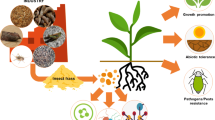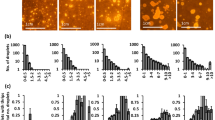Abstract
By breeding grape moth,Lobesia botrana Den. et Schiff., in laboratory conditions the effect of constant temperatures on the growth and reproduction of the pest was investigated.
On the basis of collected data the sum of effective temperatures for every stage of growth as well as the threshold temperature for the growth were calculated. For the embryonic development the temperatures are 74,0°C±2,3°C and 8,8°C; for the larval development in males 384,6°C±30,1°C and 7,3°C, in females 362,3°C±20,9°C and 9,4°C; for the chrysalis stage in males 162,1°C±23,5°C and 7,1°C, in females 151,5°C±24,0°C and 9,1°C. The sums of effective temperatures of the particular growth stages were completed by their quantil values (Q30, Q50, Q75, Q95).
The threshold temperature for the life of moths was set up as 11,0°C in males and 12,8°C in females. The reproduction activity in the majority of females begins at temperatures above 15°C.
The effect of the temperature on the actual fertility has proved to be significant. The optimal temperatures for the oviposition are within the range of 20,0°C–27,0°C. The relation between the actual fertility and temperature is at these temperatures determined by the regression line equation Y=−5,75·X+293. Temperatures below or above the limits of this interval are less favourable for the oviposition because they lead to a decreasing of actual fertility. The limit temperature (15°C) of reproduction activity in the majority of females is considered to be the lowest extreme temperature for the oviposition.
Similar content being viewed by others
Literaturverzeichnis
Bodenheimer, F. S., 1927: Über die Voraussage der Generationenzahl von Insekten. III. Die Bedeutung des Klimas für die landwirtschaftliche Entomologie. Z. angew. Ent.12, 91–122.
Gabel, B., 1980: Über eine neue semisynthetische Nahrung für die Raupen des Bekreuzten Traubenwicklers,Lobesia botrana Den. et Schiff. (Lepid., Tortricidae). Anz. Schädlingskde., Pflanzenschutz, Umweltschutz53, 72–74.
Götz, B., 1941: Beiträge zur Analyse des Mottenfluges bei den TraubenwicklernClysia ambiguella undPolychrosis botrana. Wein und Rebe23, 207–228.
Götz, B. 1943: Freiland- und Laboratoriums-Untersuchungen über Ausschlüpfen, Eiablage und Nahrungsaufnahme bei den TraubenwicklernClysia ambiguella undPolychrosis botrana. Wein und Rebe25, 135–153.
Stellwaag, F. 1939: Der Massenwechsel des bekreuzten TraubenwicklersPolychrosis botrana im Weinbau. Z. angew. Ent.25, 57–80.
Author information
Authors and Affiliations
Additional information
Mit 5 Abbildungen und 5 Tabellen
Rights and permissions
About this article
Cite this article
Gabel, B. Über den Einfluß der Temperatur auf die Entwicklung und Vermehrung des Bekreuzten Traubenwicklers, Lobesia botrana Den. et Schiff. (Lepid., Tortricidae). Anz. Schadlingskde., Pflanzenschutz, Umweltschutz 54, 83–87 (1981). https://doi.org/10.1007/BF01989858
Issue Date:
DOI: https://doi.org/10.1007/BF01989858




